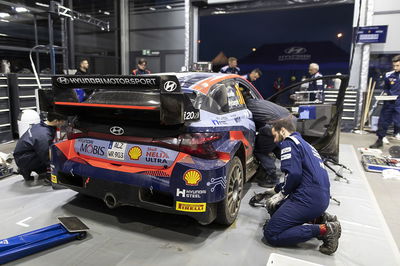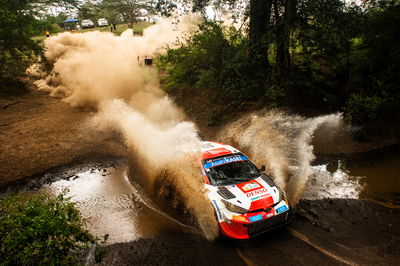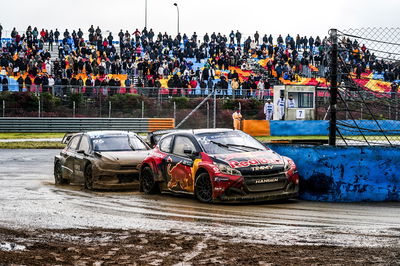WRC teams given longer to work on retired Rally1 cars under new rules

The rule change was ratified following the latest meeting of World Motorsport Council members, meaning the maximum time mechanics can carry out repairs is increasing from three hours to four. It was also agreed to give M-Sport Ford, Hyundai Motorsport and Toyota Gazoo Racing the option to split the permitted time into two slots - but how they divide this “is at their discretion”, the FIA has said.
The mid-season rule tweak has been introduced as Rally1 cars are, by their very nature, much more complex “due to the increase in technology used” - namely the energy recovery system that provides a power boost on a stage and also allows e-driving on road sections and around the service park.
Teams can use any available time before the end-of-day service begins to start repairing their retired car for what would become the first repair window. In a circular issued to the press, it read: “They can then focus fully on repairing their other cars in service before going back to finishing the repairs on their retired car once the end-of-day service has concluded during a second repair window.
“Previously, if a retired car was returned to the service park less than three hours prior to end-of-day service, teams would not be able to start work on that car until much later in the day, which could lead to teams working into the night in order to restore their retired car to full working order.”
World Motorsport Council representatives have also given the green light to new measures that are intended to counteract the high cockpit temperatures experienced by Rally1 crews at the last three rounds in Portugal, Sardinia and Kenya.
Acknowledging this was a “cause of concern on recent gravel events”, the FIA explained any changes required the support of the Homologation Commission, “which was forthcoming”. Therefore, all Rally1 cars will run larger vents on the rear window and roof scoop from Rally Estonia onwards.
FIA Rally Director Andrew Whatley said: “The action on the stages has been spectacular with the outcome of rallies decided on final stages by only a handful of seconds.
“There have been challenges, of course, and areas where further improvement is necessary but we have established a strong working relationship with the manufacturers and other stakeholders who all have the best interests of the championship as their priority.”











